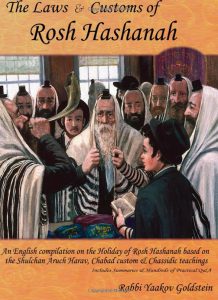
This article is an excerpt from our Sefer
Buy me here or on Amazon.com
Unesanneh Tokef:
The famous Piyyut [liturgical poem] of Unesanneh Tokef for many Jews represents the height of the Rosh Hashanah prayers, and invokes feelings of deep seriousness and emotion that remain etched in one’s memory. The liturgy was composed by Rebbe Amnon of Mainz/Magantza, Germany in the 1100’s. It was first recorded in the Sefer Or Zarua[1], written by the famous Ashkenazi Posek, Rav Yitzchak Ben Moshe [1200’s]. In there he relates a fascinating tale behind the composition of this liturgy by Rav Amnon. The following is a free translation of the Or Zarua:
“The following story occurred to Rebbe Amnon the great of Magantza, which was the Gadol Hador at that time. He was wealthy, of great lineage, and had a splended appearance. The Christian bishops and aristocrats began pressing him to convert to their religion. Although Rebbe Amnon refused, they did not stop their attempts to persuade him to follow their request, and hence after great pressure, Rebbe Amnon requested three days to consider their demand. His true intent was simply to push them off. Upon him leaving the house of the bishop he realized his grave error in giving off the impression that he will consider heresy against G-d. When he arrived home he did not eat or drink and fell ill. His family and friends came to visit him and comfort him, although he could not be comforted, stating that he will go to purgatory for what he has done. He cried very much and became very saddened. On the third day, while suffering from his anguish, the Bishop sent an entourage to escort him to the palace, although he refused. The Bishop then sent messengers of greater nobility and he still refused. The bishop then sent messengers to forcefully bring Rebbe Amnon to him. When he arrived the bishop admonished him for not coming on his own on the date that he set to give a response to their request. Rebbe Amnon stated that he will give his own judgment, and that he should have his tongue cut off being that his tongue sinned by stating a lie. His intent was to sanctify Hashem’s name over the way he originally spoke. The bishop however replied that he will not cut the tongue, as the tongue spoke well, but rather the legs which refused to come will be cut, and the rest of the body will be tortured. He proceeded to cut off the fingers of his hands and feet and upon cutting each finger they asked Rebbe Amnon if he wants to convert and Rebbe Amnon would deny their request. When the task was complete the bishop had Rebbe Amnon placed on a table with his dismembered parts and sent home. Shortly after this incident Rosh Hashanah arrived and Rebbe Amnon requested to be brought to Shul together with his salted dismembered limbs and be laid next to the Chazzan. When the Chazan arrived to Kedusha Rebbe Amnon asked him to wait so he can sanctify Hashem’s name. He then loudly recited what became to be the famous prayer of Unesanneh Tokef. At the conclusion of the prayer, while in a state of supplication, Rebbe Amnon passed away. On the third day after his passing, Rebbe Amnon appeared in a dream to Rabbi Klunminus and taught him the Piyyut of Unesanneh Tokef, and commanded him to send it to all the Jewish people throughout the exiles in order so it serve as a testimony and memory of the events, and so was done.”
Standing:[2] It is customary to stand for the recital of Unesanneh Tokef and so was the Rebbe’s custom.
The reaction of Chassidim during Unesaneh Tokef:[3] One the elder Chasidim recounted: “When I was a fleeing the authorities in Russia, I was forced to wander throughout the country. My wanderings continued for several years, and I had the opportunity to pray on the Days of Awe in different congregations. I was able to notice an interesting difference: In most Shul’s they recite the words “Uteshuvah Utefila Utzedaka” with deep emotion, much more than the other part of the prayer. However, in the synagogues of Chasidim they storm and clamor for the words Veata Melch Hu Chaiy Vekayaam.”



Leave A Comment?
You must be logged in to post a comment.